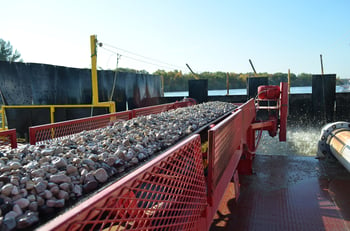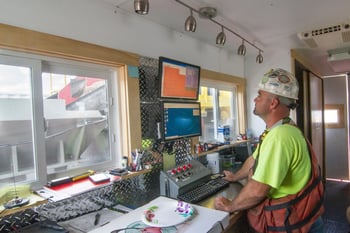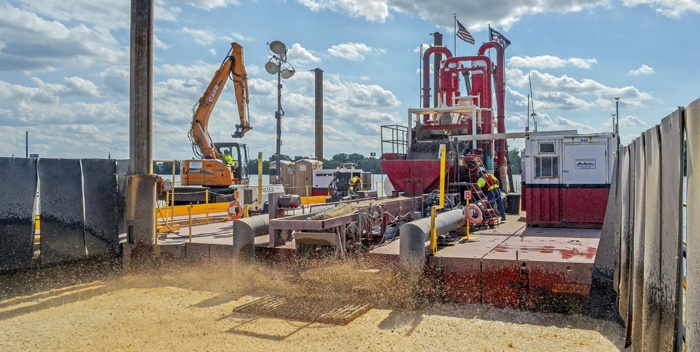 Capping is an integral part of the remediation of a water body. As the benthic community generally lives on the bottom of a lake or river, these micro-organisms are a key piece of the ecological food chain. They are also very sensitive to contaminants, and any level of exposure can greatly reduce their population. Putting a cover, or cap, of clean material such as sand, engineered materials, or stone over the bottom of the waterway can provide the clean environment in which the benthic community can flourish while trace amounts of contaminants are left to safely decompose underneath.
Capping is an integral part of the remediation of a water body. As the benthic community generally lives on the bottom of a lake or river, these micro-organisms are a key piece of the ecological food chain. They are also very sensitive to contaminants, and any level of exposure can greatly reduce their population. Putting a cover, or cap, of clean material such as sand, engineered materials, or stone over the bottom of the waterway can provide the clean environment in which the benthic community can flourish while trace amounts of contaminants are left to safely decompose underneath.
Cover capping, particularly thin layer capping, is a challenging aspect of an environmental remediation. Accurate and efficient placement of materials including sand, carbon mixtures, and rock armament, is imperative in creating an effective cover. At Brennan, we developed a system known as the Broadcast Capping System (BCS™) that has proven to be an industry-leading technology for the placement of thin-layer caps with over 1,300 subaqueous acres of caps placed since its development.
Uniform Distribution
One of the keys to effective placement of a thin layer cap is a uniform material distribution over the capping area. A cap is only as effective as its thinnest section. Therefore the capping system must be capable of placing an evenly distributed layer that will fulfill minimum thickness requirements over large areas, while at the same time, avoiding costly over-placement. By distributing capping materials uniformly over a large footprint the BCS™ is able to build a predictable cap thickness.
One Particle at a Time
The process begins above the surface of the water. Distributing the material effectively above the water’s surface allows each individual particle to slow as is falls through the water column. It then gently lands on top of the river bottom, and as more particles land, they form layers. This is especially important in constructing a cap on top of soft sediment. Gentle placement of material on top of the soft sediment is the key to successful cap construction.
Other methods of cap placement, such as mechanical placement with clamshell buckets, places material in a burst over a substantially smaller footprint. With soft sediment bottoms, this method creates the issue of intermixing clean capping materials and underlying contaminated sediments. The force of the capping material landing on the bottom of the river will displace the soft sediment and cause it to suspend in the water column. As the suspended sediment settles, it will land on top of the newly constructed cap. The result is a thin layer of contaminated sediment on top of a newly constructed cap. With the BCS™, cap material slowly builds over a significantly larger footprint, putting more uniform pressure on soft underlying sediments, minimizing displacement and intermixing.
Quality and Transparency
Brennan utilizes proven quality control protocols during BCS™ capping operations to monitor the placement of material. This includes measuring the thickness of the area capped immediately after placement. Continuous quality checks allow our crews to constantly adjust the system to achieve a consistent cap in an ever-changing environment. We log these QC checks with positional data and notes on any unique observations from the sample. In order to maintain transparency and assurance that the cap is being constructed to specification, we share this information with our clients and project partners.

A Solution in any Environment
The BCS™ is a highly versatile system. It can be mounted on a variety of platforms such as barges and amphibious equipment. This flexibility allows us to work in rivers, canals, lakes, along shorelines, and in marshlands. Clean capping materials can be delivered hydraulically or by barge to the BCS™ plant, allowing us to develop a system that best fits each project.
The Brennan Broadcast Capping System has proven to be a very effective way to place sand, engineered caps, and even stone in a variety of water-bodies of varying depths. Its accuracy and efficiency is unmatched in the industry, and we can right-size it to fit the needs of any individual project.


